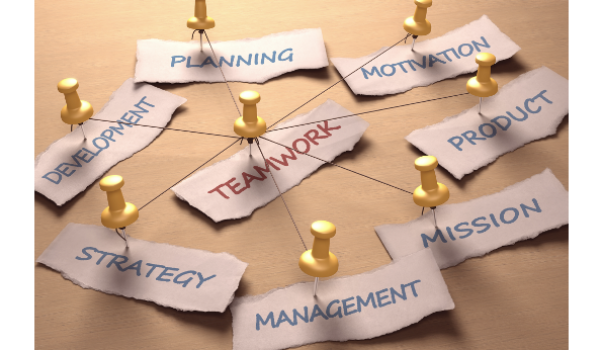View all of our courses and services
on findcourses.com
Sign up for free mini-courses
at our eLearning school
View all of our courses and services
on findcourses.com
Sign up for free mini-courses
at our eLearning school

Part 2 of 2: Which comes first: Team alignment or attunement?
Ever since the ground-breaking work of Blake and Mouton in the 1970’s, the distinction between “relationship-orientation” and “task-orientation” has proven itself to be universally practical in developing strong work teams that are both aligned and attuned. As we discussed in Part 1 of this blog, while individuals may have particular strengths, from a team perspective it is equally important to emphasize team alignment and attunement by addressing 6 issues:
Attunement on:
Alignment on:
From the standpoint of fostering innovative teams, the alignment issues are more task-oriented, with resolute alignment around the team’s purpose and vision, supported by clarity as to roles, empowerment and processes. The attunement issues are more relationship-oriented, with sustained awareness to personal values and supported by increased inclusion.
Thus, there are two fundamentally different starting points for building strong innovative teams:
From either starting point, eventually all 6 issues must be addressed. The only difference is whether the strategy of team development begins with alignment and ends with attunement, or the other way around. Both strategies have their potential advantages, depending on the circumstances.
TAKING AN ALIGNMENT-FIRST, TASK-ORIENTED APPROACH
If a team has previously formed close relationships with each other, or if they’re extremely task-focused and “won’t hold still” for the “soft stuff” of attunement, then jumping in to start aligning on task-oriented issues is the better way to go. Under these circumstances, a task-oriented approach shines by being time- and energy-efficient. Later will come the time to address the interpersonal communications and personal purpose issues that will bring about the attunement.
For example, the comptrollers of Northern Telecom in Canada once asked for assistance to reinvent their role to empower, rather than hinder, innovation. After aligning around the critical need for faster and more inventive product development, the breakthrough came when one member stood up and asked, “Do you realize that 90 percent of the figures we give to managers for making decisions are there because our government requires those figures for tax purposes? Is it possible those numbers might not be the best figures for actually making decisions?”
From this question, they saw how they influenced people’s behavior by what measures they used. For example, their sole reliance on cost-recovery measures to justify investments actually stifled innovation. As they strategized how to be neutral facilitators and scorekeepers for executive decisions, they began to “change the scorecard” to include measures that would foster risk taking and innovation, in part by creating ways to justify “soft” issues such as “retaining customer loyalty.”
TAKING AN ATTUNEMENT-FIRST, RELATIONSHIP-ORIENTED APPROACH
If a team who has communication problems begins by trying to define and align with the group’s purpose, but without much emphasis on “tuning in” to each other as individuals first, they often struggle to collaborate, like novices in a 3-legged race. If this is the case, start with a relationship-oriented team building approach. Focus first on interpersonal relationships and personal purpose; then engage in dialogues on aligning group purpose, roles, empowerment, and processes to be productive.
I once worked with the Industrial Tape Division of 3M when management had set aggressive growth goals beyond what the pipeline of products could meet. While the R&D teams had multiple sessions of team building, they required another level of breakthrough synergy to find the innovative solutions that hadn’t yet seen the light of day.
As facilitator, I said, “There’s a sea of issues and opportunities to explore, but first we must check out the boat (their teamwork) – and check it periodically during the journey.” We started by identifying the paradoxes they were facing and the strengths each person could bring to the team. Through this conversation they developed a renewed appreciation of what each person could offer and how to relate to each other with greater openness.
After this kind of attunement, they then generated multiple scenarios of their future competitive environments. For each scenario, their collaborative creativity went through the roof with new ideas. As a result, they launched themselves into a new era of growth, with new competencies to revitalize their knowledge, technologies, and relationships.
IN CLOSING...
By focusing first on the tasks, you enhance the sense of accomplishment, building confidence and trust along the way that eventually makes it more feasible to attune on the relationship issues. By taking one issue at a time and negotiating the best consensus agreement on purpose, roles, empowerment, and processes, any team can develop a greater sense of collaborative, mutually supportive teamwork.
By focusing first on relationships, you enhance the spirit of collaboration through potentially difficult discussions of purpose, roles, power, and processes. Your goal is to create high-integrity relationships. The word integrity here means much more than ethics. Integrity has the same Latin root as integer, and means oneness, wholeness, unity... and a congruency of thoughts, words, and actions.
An advantage of the task-oriented approach is that differences in direction, etc., are cleared up first rather than being misdiagnosed as “interpersonal” issues. On the other hand, with the relationship-oriented approach, people can build a foundation that makes it easier to take on potentially difficult discussions regarding purpose, roles, empowerment, and processes.
With either starting point, you must promote both alignment and attunement to bring out the highest degree of innovative potential from a team. Alignment gives single-mindedness of purpose. Attunement gives single-heartedness of purpose. Innovative teamwork is nurtured by the harmony of mind and heart.
Read Part 1: Attuning for extraordinary teamwork
![]()
![]()